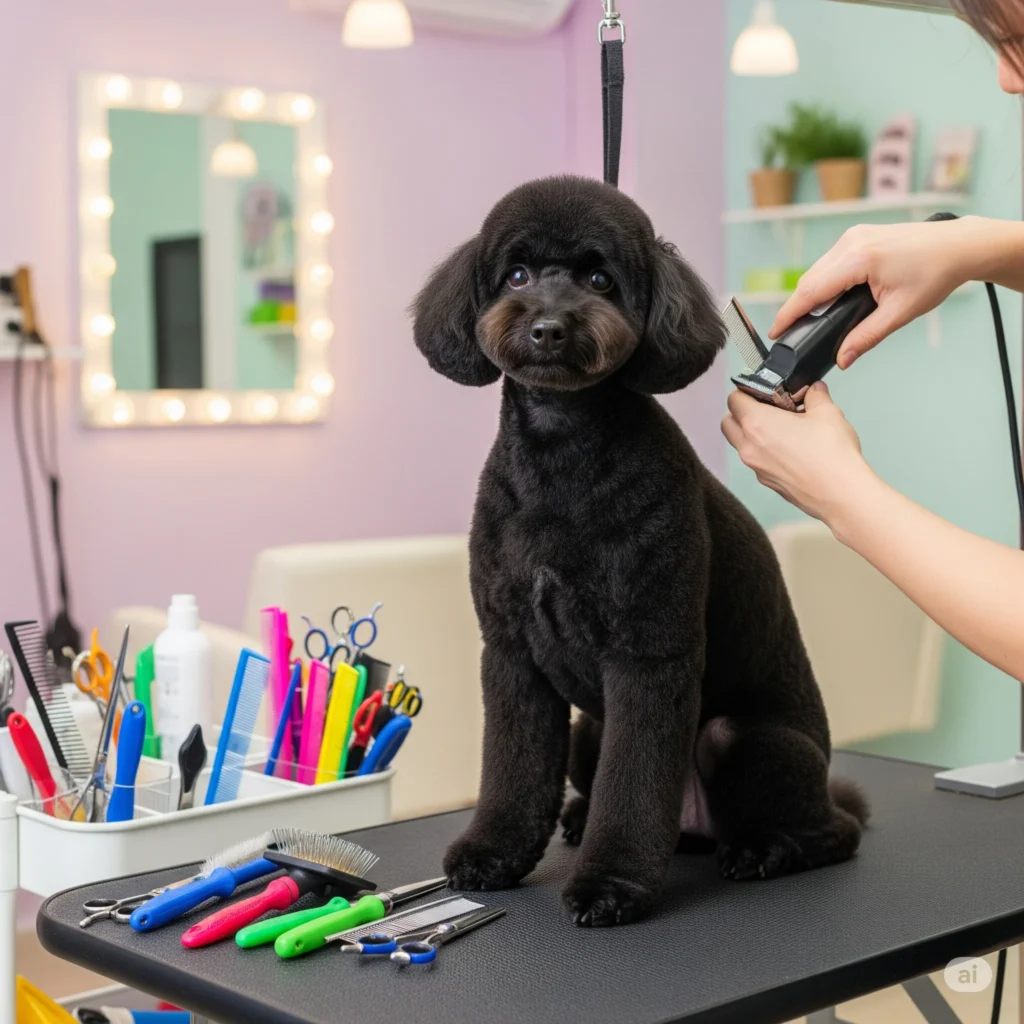
Introduction
Hey, have you ever heard of the Xoloitzcuintle? It’s this super cool, hairless dog from Mexico that’s basically a living legend. Picture a pup that looks like it stepped out of an ancient Aztec painting, all sleek and soulful. I’m obsessed with these guys, and I’m gonna spill all the tea on why they’re so awesome. From their wild history to whether they’re chill with kids or cats, let’s dive into the world of the Xoloitzcuintle and see if it’s your next furry (or not-so-furry) bestie.
Xoloitzcuintle History
Ancient origins and Aztec reverence
Okay, so the Xoloitzcuintle goes way back—like, 3,000 years back! The Aztecs were totally obsessed with them, thinking they were gifts from Xolotl, their god of lightning and death. These dogs were like spiritual superheroes, guiding souls to the afterlife. You’d find little clay Xolo statues in tombs, which is pretty wild. They were also used like living hot water bottles for aches and pains. How’s that for a multi-tasking pup?
Role in Mesoamerican culture
Back in the day, Xoloitzcuintles weren’t just pets. They were protectors, keeping bad vibes and intruders away. Some were even part of rituals—yeah, sometimes they were sacrificed or eaten, which is intense, but it shows how sacred they were. Their hairless bodies were perfect for Mexico’s hot weather, making them the ultimate Mesoamerican sidekick.
Modern resurgence and recognition
Fast forward to the 20th century, and these pups were almost gone. But in the 1950s, some dog lovers went on a mission to save the Xoloitzcuintle, tracking down purebreds in remote Mexican villages. By 1956, Mexico’s Kennel Club gave them a big thumbs-up, and in 2011, the American Kennel Club joined the party. Now, they’re like Mexico’s national treasure, and I’m here for it.
Is it Xoloitzcuintli or Xoloitzcuintle?
Linguistic roots and variations
So, the name’s a bit of a puzzle. It comes from Nahuatl, the Aztec language, mixing “Xolotl” and “itzcuintli” (dog). In Mexico, they usually say “Xoloitzcuintle,” but in English, you might see “Xoloitzcuintli.” It’s the same dog, just a spelling quirk. Honestly, it’s like choosing between “gif” and “jif”—both work!
Common usage in modern contexts
In Mexico, everyone just calls them “Xolo” or “Xoloitzcuintle.” In the U.S., you might see “Xoloitzcuintli” in fancy dog show papers, but “Xolo” is the go-to for most folks. It’s like a nickname that saves you from tripping over the full name. No stress, just pick what feels right.
Clarifying the correct spelling
If you wanna sound legit, go with “Xoloitzcuintle” like the Mexicans do. It’s got that authentic vibe. But seriously, whether you spell it with an “i” or an “e,” everyone knows you’re talking about these epic hairless pups. Let’s not get hung up on the details.
How do you pronounce Xoloitzcuintli?
Breakdown of Nahuatl pronunciation
Alright, let’s tackle this tongue-twister. In Nahuatl, it’s something like “shoh-loh-eets-kweent-lee.” The “x” is a soft “sh,” and that “tl” is a weird clicky sound. It’s like trying to say a spell from a fantasy movie. Takes some practice, but it’s worth it for the cool factor.
Common English approximations
Most people just say “show-low” or “show-low-eets-QUEENT-lee” to keep it simple. I mean, who’s got time to nail the full Nahuatl vibe? “Show-low” is catchy and gets the job done, so I’m sticking with it for casual chats.
Tips for mastering the name
Wanna impress your friends? Break it down: “sho-lo-eets-kweent-lee.” Say it slow, hit that “kweent” part with some swagger. Maybe watch a YouTube vid of a native speaker to get the rhythm. Once you’ve got it, you’ll be tossing “Xoloitzcuintle” into convos like a pro.
Are Xoloitzcuintle friendly?
Temperament and personality traits
Xoloitzcuintles are total sweethearts. They’re chill, loyal, and love hanging out with their people. Think of them as your clingy best friend who’s always down for a cuddle. They’re smart and a bit sensitive, which makes them super lovable but also means they need your attention.
Interaction with family and strangers
These dogs are all about their family—they’ll stick to you like glue. With strangers, they’re a bit shy, giving off “who’s this guy?” vibes until they warm up. With some training, they’ll be cool with your buddies, but they’re always watching out for you like tiny bodyguards.
Factors influencing friendliness
Raise a Xoloitzcuintle with lots of love and social time, and they’ll be your social butterfly. Skip the socialization, and they might get a bit grumpy or nervous. It’s all about showing them the world early on so they know everyone’s not out to get them.
What is a perro Xoloitzcuintle?
Defining the Mexican Hairless Dog
“Perro Xoloitzcuintle” just means “Mexican Hairless Dog” in Spanish. It’s this sleek, bald pup that’s basically Mexico’s mascot. They’re loyal, a bit mythical, and totally steal the show with their unique look. Think of them as the rock stars of the dog world.
Physical characteristics and varieties
Xolos come in three sizes: toy (tiny), miniature (medium), and standard (bigger). The hairless ones have smooth, warm skin with a little tuft on their head, like a punk rock mohawk. Coated ones have short fur, but both have this cool, lean look with big ears and sparkly eyes.
Unique traits of the breed
Besides being bald and cozy, Xoloitzcuintles are like walking space heaters—perfect for snuggling. The hairless guys sometimes have missing teeth, which is just part of their quirky charm. They’re tough, low-maintenance, and have this ancient vibe that’s hard to beat.
Xoloitzcuintli price
Factors affecting cost
Okay, brace yourself: a Xoloitzcuintle puppy can cost anywhere from $1,000 to $3,000. The price depends on stuff like the dog’s family tree, the breeder’s rep, and whether it’s a tiny toy or a bigger standard size. Smaller ones tend to be pricier—supply and demand, ya know?
Breeder considerations and adoption options
If you’re going through a breeder, check out ones linked to the Xoloitzcuintli Club of America—they’re legit but pricey. Want Ascending a Xolo from a rescue, like National Xolo Rescue, can save you some cash (think $200–$500). Do your homework to avoid sketchy puppy mills.
Long-term financial commitment
Owning a Xoloitzcuintle isn’t just the upfront cost. You’re looking at vet bills for skin care and dental checkups, probably $500 a year. Plus food, grooming stuff, and maybe some training classes. They live a long time—13 to 18 years—so plan for the long haul!
Do Xolo dogs smell?
Skin oil production and odor
Hairless Xoloitzcuintles have /*#__“Xoloitzcuintle”> can have a bit of–
System: a musky smell from the oils their skin makes, especially when they’re young. It’s not like “wet dog” bad, more like a faint earthy scent. Coated Xolos don’t really have this issue, so they smell like your average pup.
Grooming practices to manage scent
Keep your Xoloitzcuintle fresh with a weekly bath using a gentle shampoo. Too much washing can dry out their skin, though, so don’t overdo it. A quick wipe-down with a damp cloth between baths keeps things nice and clean.
Comparing hairless and coated varieties
Hairless Xolos are the ones with the occasional whiff due to their skin oils, but it’s not a dealbreaker. Coated ones are basically odor-free as long as you keep up with basic grooming. Either way, a little care goes a long way to keep your Xoloitzcuintle smelling fine.
Do Xoloitzcuintli bark a lot?
Barking tendencies and triggers
Xoloitzcuintles aren’t yappy like some tiny dogs. They’ll bark to let you know someone’s at the door or if something’s off, but they’re not going off for no reason. They’re like, “Yo, something’s up!” and then chill out.
Training to manage vocalization
Teach your Xoloitzcuintle to hush with some treats and praise when they’re quiet. Start young, get them used to people and noises, and they’ll keep the barking to a minimum. They’re smart, so they pick upto be a breeze if you’re consistent.
Watchdog capabilities
These guys are great watchdogs. They’ll give a quick bark to alert you without turning into a non-stop noise machine. Perfect if you want a dog who’s got your back but doesn’t drive you nuts with constant yapping.
Are Xoloitzcuintli aggressive?
Natural instincts and behavior
Xoloitzcuintles aren’t out here starting fights. They’re chill and protective, but not mean. They might give strangers the side-eye at first, but that’s just them being cautious, not aggressive. Raise ‘em right, and they’re total softies.
Socialization’s role in temperament
Get your Xoloitzcuintle out and about early—meeting people, other dogs, the works. If they’re cooped up or ignored, they can get a bit snappy. Show them the world, and they’ll be your cool, calm buddy.
Addressing myths about aggression
Some folks think Xoloitzcuintles are aggressive because they look tough and have that ancient warrior vibe. Nah, they’re just loyal and a bit protective. Bad behavior usually comes from bad owners, not the dog itself.
What are the downsides of Xoloitzcuintli?
Health concerns and skin care needs
Hairless Xoloitzcuintles can get pimples or sunburn, so you’ve gotta stay on top of their skin care. Their teeth can be wonky too, missing some chompers, which means extra vet visits. It’s not a huge deal, but it’s something to keep in mind.
Environmental limitations
These pups love warm weather, but cold? Not their jam. You’ll need to bundle them up in a doggy sweater for winter walks. And watch out for sunburn—yep, they need sunscreen too. It’s like having a dog that’s part beach bum.
Lifestyle compatibility challenges
Xoloitzcuintles are clingy—they want to be with you 24/7. If you’re always out, they’ll get mopey. Their chase instinct can also make them a bit much in homes with small pets. They’re awesome, but you need to be ready for their quirks.
Are Xoloitzcuintli hard to train?
Trainability and intelligence
Xoloitzcuintles are crazy smart and eager to please, so training’s usually a breeze. But they’ve got a stubborn streak, so you gotta stay firm and keep it fun. Think treats, short sessions, and maybe some puzzle toys to keep them hooked.
Effective training methods
Stick to positive vibes—treats, praise, the good stuff. Xoloitzcuintles love it. Keep sessions short and sweet, maybe throw in some agility games. Yelling or harsh stuff? Total backfire with these sensitive souls.
Challenges for novice owners
If you’re new to dogs, Xoloitzcuintles might test you. They’re smart enough to spot when you’re slacking on the rules. Stay consistent, or they’ll run the show. First-timers might want a trainer’s help to get the hang of it.
How smart are Xoloitzcuintli?
Cognitive abilities and problem-solving
Xoloitzcuintles are brainy little dudes. They figure out puzzles and tricks like it’s nothing. They’re super aware of their surroundings, always picking up on what’s going on. It’s like having a furry detective in the house.
Comparison to other breeds
They’re not out here winning doggy IQ tests like Border Collies, but Xoloitzcuintles hold their own. They’ve got this instinctual smarts, like a German Shepherd, but with a chill vibe. They’re quick to learn your routine and love showing off.
Examples of intelligence in action
Xolos will bark at a shady shadow or solve a treat puzzle in record time. My friend’s Xoloitzcuintle learned to open the fridge—true story! They’re also super in tune with your mood, like they know when you’re having a rough day.
What are the problems with Xolos?
Common health issues
Hairless Xolos deal with skin stuff like acne or burns, and their teeth can be hit-or-miss. Some have joint issues or weird drug sensitivities, so you gotta keep an eye on them. Regular vet trips keep things under control.
Behavioral considerations
That chase instinct? It’s real. Xoloitzcuintles might go after anything that moves, which can be a hassle with cats around. They also get clingy and sad if you leave them alone too much. Gotta keep them social and happy.
Maintenance requirements
Hairless Xolos need regular skin TLC to avoid irritation or that musky smell. Dental checkups are a must for those missing teeth. And don’t forget the doggy jacket for chilly days. It’s a bit of work, but they’re worth it.
Can Xoloitzcuintli eat chocolate?
Dangers of chocolate for dogs
Chocolate’s a big no-no for all dogs, including Xoloitzcuintles. It’s got theobromine, which is basically poison for them—think vomiting, seizures, or worse. Keep the candy far away from your pup.
Xolo-specific sensitivities
Hairless Xolos might be extra sensitive to stuff like chocolate because of their quirky bodies. Even a little nibble can mess them up, so don’t risk it. Stick to dog-safe treats to keep them happy and healthy.
Safe dietary alternatives
Feed your Xoloitzcuintle good dog food that matches their size and age. For treats, go with carrots, apple slices, or dog biscuits. Chat with your vet to make sure their diet’s on point for a long, happy life.
Are Xolos good with kids?
Compatibility with children
Xoloitzcuintles can be awesome with kids, especially if they grow up together. They’re playful and loyal, like a furry sibling. But they’re not fans of roughhousing, so they vibe better with older kids who know how to be gentle.
Importance of supervision and training
Keep an eye on things, ‘cause little kids might tug an ear and get a grumpy Xolo in return. Teach kids to play nice and train your Xoloitzcuintle to handle kid energy. With some work, they’ll be best buds.
Ideal family dynamics
Xolos shine in homes where everyone’s around a lot, with a solid routine. They’re perfect for families with older kids who get the whole “be gentle” thing. They’ll stick to you like glue and make every day a little more fun.
Do Xolos have teeth?
Dental characteristics of hairless Xolos
Hairless Xoloitzcuintles often have some missing teeth—usually premolars—because of their hairless gene. It’s normal, but it can look funny, like they skipped a dentist visit. Some have full sets, but it’s hit-or-miss.
Coated variety differences
Coated Xolos usually have all their teeth, no weird gaps. They’re like the “normal” version of the breed when it comes to chompers. Just keep up with regular brushing, and they’re good to go.
Dental care requirements
Brush their teeth a couple times a week to keep plaque at bay. Hairless ones might need soft food if they’re missing a few teeth. Yearly vet cleanings are a must to keep your Xoloitzcuintle’s smile (or lack thereof) in check.
Are Xoloitzcuintli good with cats?
Prey drive and pet compatibility
Xoloitzcuintles have this chase-everything instinct, so cats can be a problem. They might see your kitty as a fun toy to run afer. If they’re not used to cats, things can get dicey fast.
Social–
System: ization strategies Get your Xoloitzcuintle around cats early, like when they’re still a pup. Start with calm, supervised meet-and-greets in a neutral spot. Train them to focus on toys instead of chasing Fluffy. Patience is key to making it work.
Success stories and challenges
Some Xoloitzcuintles are total pals with cats, especially if they grow up together. My neighbor’s Xolo and cat snuggle like champs! But if your Xolo’s older or not socialized, that prey drive can be a headache. Keep at it, and they might just become buddies.
Conclusion
So, there you have it—the Xoloitzcuintle, Mexico’s coolest hairless dog with a side of ancient magic. They’re loyal, smart, and have that unique vibe that makes you feel like you’ve got a piece of history chilling on your couch. Sure, they’ve got some quirks like skin care and clinginess, but the love and personality they bring? Totally worth it. If you’re thinking about getting one, do a little research and get ready for a one-of-a-kind buddy who’ll steal your heart.
you may like it






